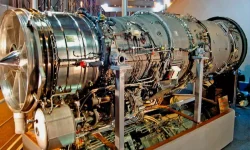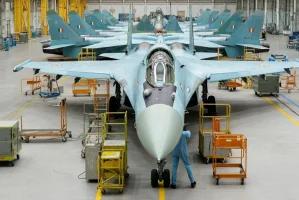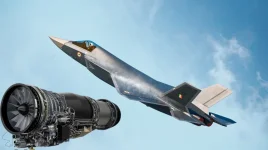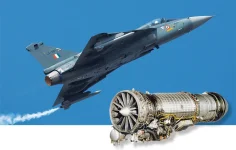- Views: 5K
- Replies: 6
India's ambitious Advanced Medium Combat Aircraft (AMCA) initiative, aimed at developing a 5.5-generation stealth fighter jet, is drawing global interest not just for its advanced technology goals but also for its notably economical development budget.
With an initial funding allocation of ₹15,000 crore (around $1.8 billion) approved for the Full-Scale Engineering Development (FSED) phase, which includes building five prototypes over ten years, the AMCA project appears positioned as potentially the most cost-effective 5th-generation fighter program worldwide.
This analysis explores the AMCA's development funding and contrasts it with the reported costs associated with other major 5th-generation fighter jet programs across the globe. It aims to shed light on India's approach to cost management in high-tech defence projects and consider its possible effects on the international aerospace and defence market.
Spearheaded by the Aeronautical Development Agency (ADA) under the Defence Research and Development Organisation (DRDO), the AMCA program intends to deliver a multi-role combat aircraft featuring key 5th-generation traits. These include stealth characteristics (low radar visibility), the ability to fly at supersonic speeds without afterburners (supercruise), advanced sensor integration (sensor fusion), and sophisticated avionics.
The aircraft is often termed "5.5-generation" as its later version, the Mark 2, is expected to integrate technologies typically associated with future 6th-generation concepts, serving as a technological bridge.
In March 2024, India's Cabinet Committee on Security (CCS) sanctioned the ₹15,000 crore ($1.8 billion) budget for the AMCA's FSED phase. This crucial funding covers the design, development, testing, systems integration, and initial production-related activities for five prototypes over the next decade.
The program targets a first flight by 2028 and anticipates induction into the Indian Air Force around 2034.
This budget translates to roughly $360 million per prototype, a figure significantly lower than comparable development stages in other global 5th-generation fighter programs, prompting interest in India's strategy for achieving advanced capabilities within a constrained budget.
Factors contributing to this cost-effectiveness likely include lower labour costs in India, leveraging experience from the indigenous LCA Tejas program, and a phased development approach.
To place the AMCA's budget in perspective, it's useful to compare it with the development costs of other prominent 5th-generation fighter aircraft. It is important to note that direct comparisons can be challenging due to differences in national accounting practices, inflation rates over long development periods, and the specific scope included in reported "development costs." However, publicly available estimates offer a valuable benchmark.
1. Lockheed Martin F-35 Lightning II (United States)

Considered the largest and most expensive military aircraft program, the F-35's development was complex, involving three distinct variants for different military branches and numerous international partners.
- Estimated Development Cost: Around $55 billion (adjusted) for the System Development and Demonstration (SDD) phase (2001-2018).
- Current Unit Cost: Approximately $80–$110 million per aircraft (excluding R&D).
- Comparison: The F-35's development budget vastly exceeds the AMCA's initial $1.8 billion FSED allocation, reflecting its broader scope and multinational nature.
2. Lockheed Martin F-22 Raptor (United States)

The F-22 was the world's first operational 5th-generation fighter, setting standards for stealth and air dominance. Its high cost, however, led to a limited production run.
- Estimated Development Cost: Approximately $28 billion for the Engineering, Manufacturing, and Development (EMD) phase (1990s-early 2000s).
- Historical Unit Cost: Roughly $150 million per aircraft (adjusted, excluding R&D).
- Comparison: The F-22's development cost was about 15 times higher than the AMCA's currently allocated FSED budget, illustrating the immense expense associated with pioneering such technology at the time.
3. Sukhoi Su-57 Felon (Russia)

Developed as Russia's answer to US 5th-generation jets, the Su-57 program has faced delays and challenges, entering limited service in 2020.
- Estimated Development Cost: Widely estimated between $10–$15 billion for the PAK FA program.
- Estimated Unit Cost: Speculated around $40–$50 million, though transparency is limited.
- Comparison: While less costly than US programs, the Su-57's estimated development budget is still several times higher than the AMCA's initial funding. Lower production and labour costs in Russia are factors, but questions remain about its full adherence to 5th-generation standards.
4. Chengdu J-20 Mighty Dragon (China)

China's J-20 stealth fighter entered service in 2017. Details surrounding the program costs are not fully transparent.
- Estimated Development Cost: Analyst estimates range from $5–$10 billion or potentially more for Research & Development (R&D).
- Estimated Unit Cost: Around $50–$70 million, subject to production scale.
- Comparison: The J-20's development likely cost 3 to 5 times more than the AMCA's FSED budget. Factors like state-directed investment and large production scales likely influence its cost structure.
5. KAI KF-21 Boramae (South Korea)

Developed by South Korea with Indonesian partnership, the KF-21 is often classified as a 4.5 or bridging 5th-generation fighter. It first flew in 2022.
- Estimated Development Cost: Approximately $8.5 billion for the overall program (including R&D and initial production).
- Estimated Unit Cost: Around $50–$60 million for early batches.
- Comparison: The KF-21's budget is significantly higher than the AMCA's FSED funding (around 4-5 times), potentially influenced by South Korea's established industrial capabilities and technical assistance from partners like the US.
6. TAI TF Kaan (Turkey)

Turkey's national 5th-generation fighter project aims to replace its older F-16 fleet. The aircraft achieved its maiden flight in early 2024.
- Estimated Development Cost: Projected around $10–$12 billion for R&D and initial production, with potential for increases.
- Estimated Unit Cost: Projected at $80–$100 million once production matures.
- Comparison: The TF Kaan's projected development cost is substantially higher than the AMCA's initial budget, reflecting factors like reliance on international partnerships (e.g., for engines initially) and the inherent costs of establishing a new 5th-generation program.
If India successfully develops and produces the AMCA within projected cost frameworks while meeting its advanced technological requirements, it could significantly bolster the nation's self-reliance ('Atmanirbhar Bharat') in defence aerospace and potentially offer a highly competitive option on the global market.
However, the program must navigate the significant technical and integration challenges inherent in developing such advanced military hardware while adhering to its ambitious timeline and budget.





